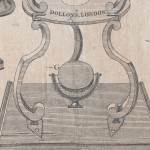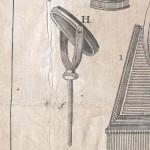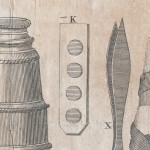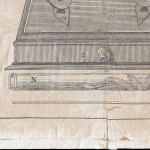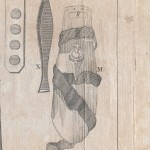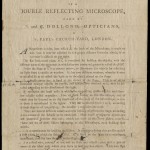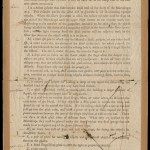As the Museum’s first curator of science and technology, I’m looking forward to sharing more about the science and innovation of glass. The Museum’s Innovation Center displays hundreds of objects that show how glass has been used to explore our world—from seeing outside our atmosphere through telescopes to seeing the tiny details that make up living organisms under a microscope.

Description of the double reflecting
microscope, made by P. and J. Dollond,
opticians in St. Paul’s Church-yard,
London. 1770-1779. 4 p., 2 leaves of
plates: ill.; 27 x 19 cm. CMGL 136560.
My background is in telescopes and optics, so I was excited to get a closer look at this recent acquisition of the Rakow Library, a pamphlet describing an 18th century double reflecting microscope by London Opticians P. and J. Dollond. The Dollond family (John with son Peter, followed by Peter and John II) ran the most widely-known optical instrument business in London, England from the 1750s onward. Much of their success came from their patent for an achromatic telescope. It featured lenses made of crown glass and flint glass to reduce an annoying rainbow effect that plagued other telescopes. Applying this strategy to microscopes was much more difficult; it took until the 1820s before other instrument makers figured it out.
Nonetheless, the Dollonds developed a significant market for microscopes as well. Their highly trained workshop—segregated by skills so that staff could not launch their own business—produced instruments with the “Dollond London” signature that marked some of the finest and most desired devices of the day. A buyer could use a detailed sales pamphlet such as this one to figure out some of the basic functions of their device; the illustrated double reflecting model dates from 1769-1804, when the brothers operated the business.
Seeing microscopic items requires light to illuminate them. You can use a mirror (G, at the bottom) or a lens (H, lower left) to bring light from the sun or a candle to focus on the object you want to examine. Typically, the object would be placed on an ivory slider (K, at the top). Today’s microscopes use a glass slide to provide support for the object and a clear, transparent window for letting light through. Until the middle of the 19th century, it was not possible to craft optical quality glass this thin, so Dollond’s model uses an ivory support holding 4 windows, each made of very thin slices of talc, although mica was also frequently used.
- Figure G
- Figure H
- Figure K
- Figure N
- Figure M
Another strategy for holding specimens involves using a glass tube (N, at bottom). To understand how this works, we’ll first turn to the intriguing object at the upper right corner of the illustration, the fish plate (M). No one had observed the physical connections between blood in arteries and veins until 1661, when Marcello Malpighi saw the capillaries (in a frog’s lung) that link an artery to a vein. After that discovery, it seems that everyone simply had to repeat the observation. The fish plate in particular made this task easy. One simply tied a fish (listed here as a smelt or gudgeon) using the silk or cloth ribbon provided so that its splayed-out tail spread over the hole (K) at the top of the plate. The light shining through the tail, when magnified to about 100x, revealed the capillaries to the impressed viewer. One could accomplish the same with a frog by using a wire grid built for that purpose, or by placing said frog (or fish) inside one of three glass tubes (N), with its toes (or tail) splayed and the nearly transparent exposed membrane ready for inspection. For the two centuries after Malpighi’s discovery, virtually every microscope came equipped with the frog or fish capillary accessories! Surviving instruments suggest that public demonstrations might have been a more common location for such activities than the home of an ordinary buyer.
Just as an historic user of the glass scientific instruments portrayed here caught sight of an otherwise unseen world, we can use this pamphlet to catch a glimpse into the world of centuries past. Have fun reading the text—and remember that the ∫ is actually an “s”!
The Rakow Research Library is open to the public 9am to 5pm every day. We encourage everyone to explore our collections in person or online. If you have questions or need help with your research, please use our Ask a Glass Question service.

